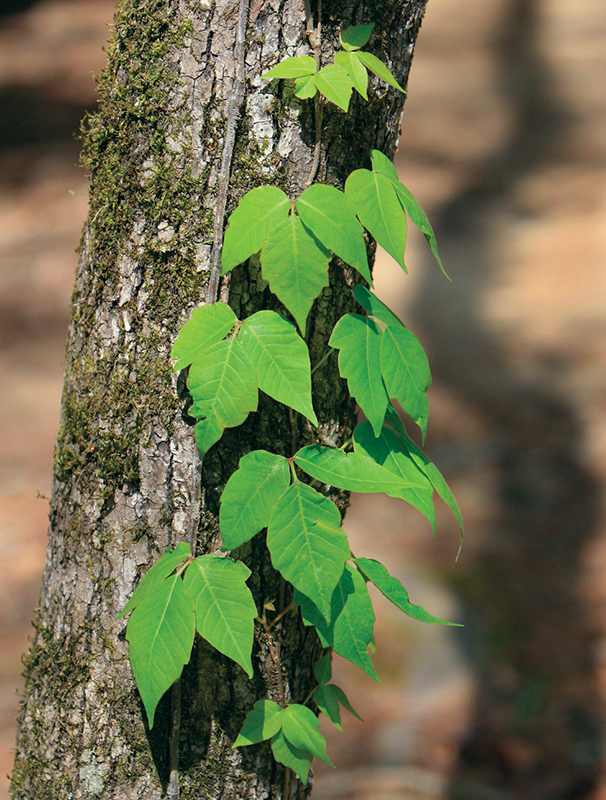Poison ivy is a kind of harmful vine or shrub that can irritate the skin. It grows plentifully in parts of the United States and southern Canada. Poison ivy usually grows as a vine twining on tree trunks or straggling over the ground. But the plant often forms upright bushes if it has no support to climb upon. Plants related to poison ivy include poison oak, which grows throughout much of Pacific North America and in parts of the eastern United States, and poison sumac, which grows in the eastern United States. Poison oak and poison sumac both are shrubs.

The tissues of all these plants contain a poisonous oil somewhat like carbolic acid. This oil is extremely irritating to the skin. It may be brushed onto the clothing or skins of people coming in contact with the plants. Many people have been poisoned merely by taking off their shoes after walking through poison ivy. People also can get poisoned from other people, but only if the oil remains on their skin. The eruptions themselves are not a source of infection.
Appearance.
The leaves of poison ivy are red in early spring. Later in spring, they change to shiny green. They turn red or orange in autumn. Each leaf is made up of three leaflets more or less notched at the edges. Two of the leaflets form a pair on opposite sides of the leafstalk, while the third stands by itself at the tip of the leafstalk. Small greenish flowers grow in bunches attached to the main stem close to where each leaf joins it. Later in the season, clusters of poisonous, berrylike drupes form. They are whitish, with a waxy look.
Control and treatment.
Efforts have been made to destroy these plants by uprooting them or by spraying them with chemicals. But poison ivy and poison oak are so common that such methods have not been very effective in eliminating them. Contact with the plants should be avoided.
After the oil has touched the skin, it usually takes some time for it to penetrate and do its damage. Before this happens, it is wise to wash the skin thoroughly several times with plenty of soap and water. Care should be taken not to touch any part of the body, for even tiny amounts of the oil will cause irritation. If poisoning develops, the blisters and red, itching skin may be treated with dressings of calamine lotion, Epsom salts, or bicarbonate of soda.
